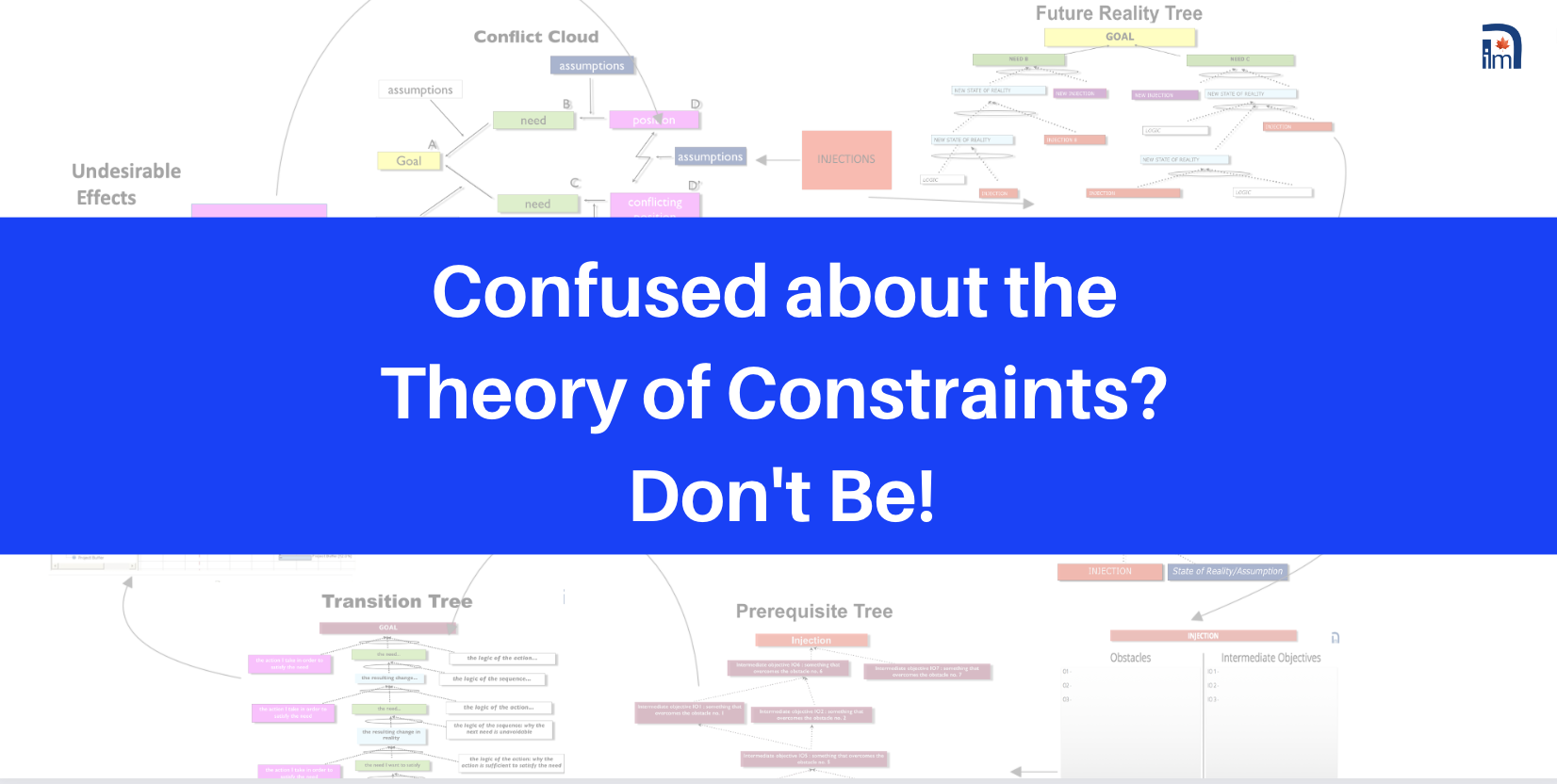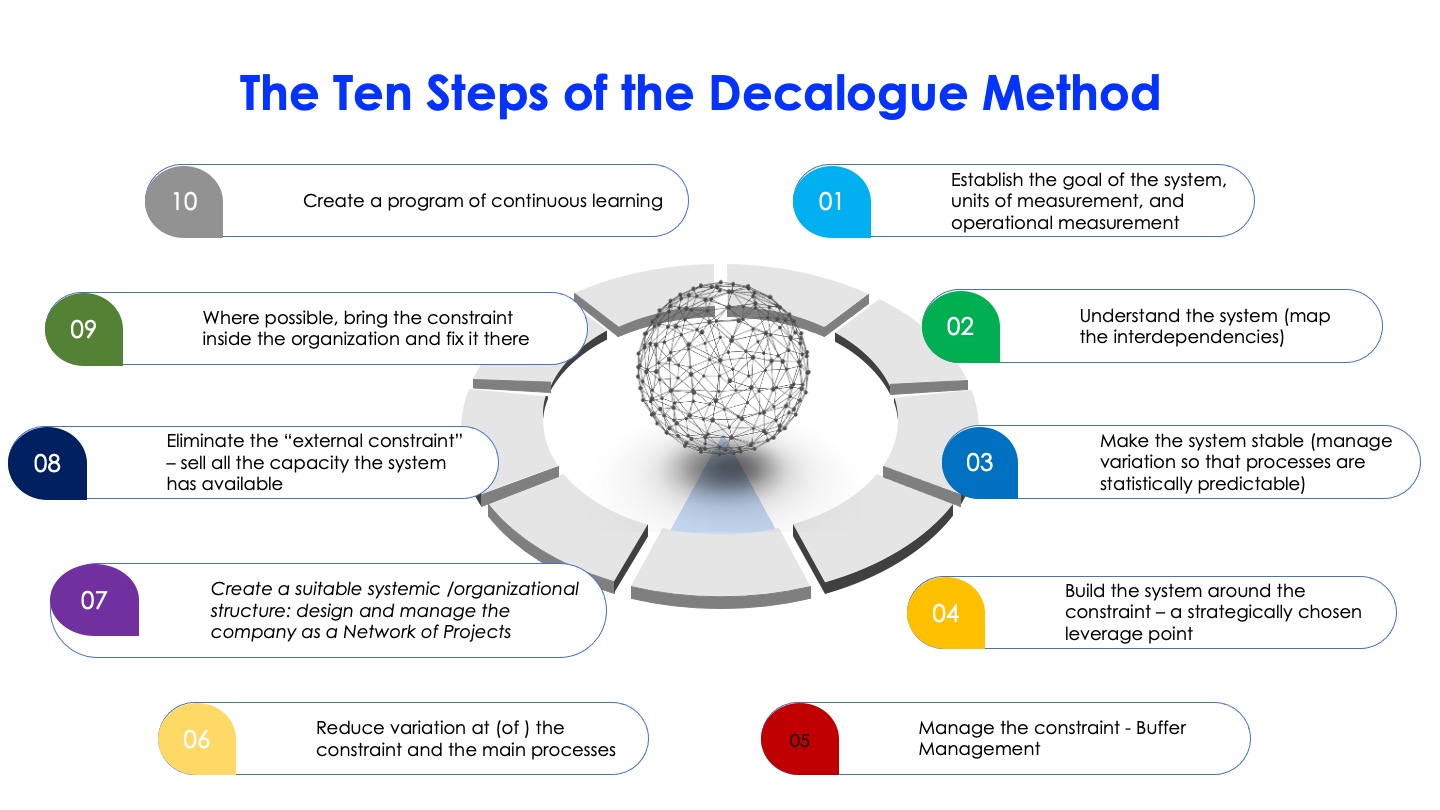 A lot of confusion has arisen about the Theory of Constraints (TOC) and people publish the strangest things about it. Just this week, an entrepreneur in the USA is quoted as saying that his company “applies the theory of constraints to help identify the most pressing factors that stand in the way of achieving a goal and then systematically acts to remove or lessen the constraint to minimize its impact.” Frankly, it’s painful just to write those words. People confuse bottlenecks with a constraint that is in fact a strategic leverage point. Not only do you not want to “minimize it”, you choose the constraint strategically and design the entire organization around it to increase the speed and effectiveness of flow in everything the company does. It is a powerful focusing mechanism that keeps the organization mindful of where energies need to be concentrated.
A lot of confusion has arisen about the Theory of Constraints (TOC) and people publish the strangest things about it. Just this week, an entrepreneur in the USA is quoted as saying that his company “applies the theory of constraints to help identify the most pressing factors that stand in the way of achieving a goal and then systematically acts to remove or lessen the constraint to minimize its impact.” Frankly, it’s painful just to write those words. People confuse bottlenecks with a constraint that is in fact a strategic leverage point. Not only do you not want to “minimize it”, you choose the constraint strategically and design the entire organization around it to increase the speed and effectiveness of flow in everything the company does. It is a powerful focusing mechanism that keeps the organization mindful of where energies need to be concentrated.
Employers are seeking people who know about the Theory of Constraints
Job ads asking for people with knowledge of the Theory of Constraints (TOC) are becoming more frequent. TOC is regularly lumped together with Lean and Six Sigma as a “continuous improvement technique”. Perhaps the greatest source of confusion about TOC comes from considering it as a “technique”. It is not. It is a transformational, systemic approach to management and provides a complete method for systemic, breakthrough thinking. It has been our privilege to work with every aspect of TOC for over 25 years. TOC belongs, first and foremost, in the Boardroom, where it can inform and direct the highest level of strategy. Its uniqueness lies in the way it can then be deployed throughout operations to radically boost, not just improve performance.
Some history about the Theory of Constraints
The Theory of Constraints came into our lives back in the mid 1990s. At that time, our Founder, Dr. Domenico Lepore, was invited to design and deliver courses on Quality for entrepreneurs organized by the Ministry for Industry in the city of Milan, Italy. The whole of that region is off the chart for entrepreneurship and density of businesses. It was the perfect place to engage with companies seeking a way to improve performance. As a physicist, Domenico, became deeply immersed in the work of American physicist and statistician, Dr. W. Edwards Deming, and used that knowledge to design programs on Quality. Not the kind that gets registered through the various ISO certifications, but real Quality: a transformational approach that recognizes a company as a network of interdependent components that work together to achieve a common goal. It is a robust approach to management that embeds continuous improvement into the day-to-day and that is founded on the belief that by working together as a system in a way that makes sense rather than in silos, people can achieve greater satisfaction in their work as well as improved performance as a company.
One day, a colleague handed Domenico a book by another physicist, Dr. Eliyahu Goldratt who developed the Theory of Constraints. Reading that book was the start of a life-changing path. Domenico devoured all of Goldratt’s publications and realized that putting together the work of Deming and Goldratt would provide a powerful transformational protocol. He embarked on a journey of education with Goldratt’s main partner at the time, Oded Cohen, and together they published the book ‘Deming and Goldratt: The Decalogue’. It was the first book to be published by Larry Gadd, Goldratt’s publisher, on the Theory of Constraints that was not written by Goldratt himself.
Deming and Goldratt together
This synergy of Deming and Goldratt’s work became the foundation of our first consulting company. We were involved first hand when Goldratt introduced the Thinking Processes and his revolution for Project Management that he called Critical Chain. Over the years, with a talented team that has included physicists, engineers, mathematicians, philosophers and writers, our work has deepened in scope and application in many sectors, both in Europe and North America. We have even been able to develop some robust innovations in applying TOC. Most recently, this has been through our rewriting of the Critical Chain algorithm. Under the oversight of Dr. Giovanni Siepe, we were able to achieve a breakthrough in managing multi-projects by scheduling competencies with our Ess3ntial web-based platform (see www.ess3ntial.com). It’s a whole new way of looking at how an organization can make the most of the competencies available.
The effectiveness of the approach is even more striking in our complex times and our greatest satisfaction is to see the companies we work with grow and evolve. Never like today do CEOs and leaders need to understand what the problem is, what they need to transform towards and how to make that transformation happen. Understanding complexity in its fullest sense and having a way to address it has become a necessity.
The importance of variation
All our work with the Theory of Constraints is founded on a profound understanding of variation and how to manage it. Without this understanding at the centre of Deming’s approach, companies are severely hampered in their ability to improve and grow sustainably. Dr. Goldratt fully recognized the importance of variation in a private conversation with Domenico but chose not to stress it in his communication of TOC. We will never know, but perhaps if he had talked more openly about it, the confusion about TOC compared to Lean and Six Sigma would never have arisen.
Through our work in the field with entrepreneurs and organizations and through our publications, we hope to contribute to a clearer understanding of what TOC is and how it can drastically improve company performance in all aspects, from strategy through to every detail of operations in any sector. We’re delighted that our post called ‘What is the Theory of Constraints REALLY about?’ has become a popular source of information.
We stand on the shoulders of two giants of management, Dr. Deming and Dr. Goldratt, and it is a privilege to carry their work forward every day. The learning never ends.







Leave a Reply